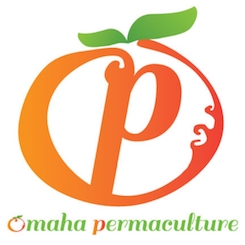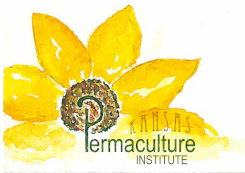Keynote: "What can one person do? The perspective of a long-time activist" by Denise O'Brien, Atlantic, Iowa
- (ran for Iowa secretary of agriculture in 2007?)
- Why farm? for family, for physical activity and connection to nature. Also to set a good example, amid ample bad examples.
- Distinguish between agribusiness and agriculture, because agribusiness gives nothing back to the ecology or culture, but real farmers participate in the community.
- Finding a niche market for organic products is crucial. Cannot compete as a commodity.
- Organic standards are good discipline for farmers, to keep better records, food safety practices they should be doing anyway.
- Cost sharing is an important way to make organic production accessible to new producers.
- Inclusion of hydroponics in organic standards is problematic because the contributions of soil microbes cannot be replicated.
- Protecting against burnout as an activist: get grounded on your farm, share with family and community. Do yoga and read books for fun.
- We are the ones we've been waiting for. We have to step up.
Breakout: Building resilience from the ground up, by Tom Buller, K-State
- Climate models for this part of the country predict less precipitation in summer and fall, more in winter and spring. Western Kansas may have less overall.
- Start with soil health, the capacity to function as a vital, living ecosystem.
- Physical and chemical characteristics of soil have been well understood for a long time, but biological understanding is relatively new.
- Soil health reduces erosion, increases bioavailable nutrients, increases infiltration and water & nutrient storage capacity, and increases total productivity. It is increasingly important under weather/climate stress.
- NRCS soil health principles: continuous living roots, min disturbance, max biodiversity, max soil cover.
- Cover crops contribute to all of these principles. They can add organic matter, enhance mycorrhizae, add nitrogen, suppress weeds, suppress nematodes, reduce erosion, increase water infiltration, attract beneficial insects, and decrease nutrient loss. No one cover crop does all these things, so use a diversity.
- De-intensify rotations by leaving rows of fallow crop between rows of rotated crops.
- Recommended winter-kill annuals: oats, tillage radish, buckwheat, chickling vetch.
- Recommended overwintering annuals: cereal rye, winter wheat, triticale, Austrian winter peas, hairy vetch, crimson clover.
- Recommended warm-season covers: sorghum sudangrass, millet, buckwheat, cowpeas, forage soybean, Sunn hemp (not related to hemp).
- Not crazy about mixes; usually uses one grass and one legume at a time.
- Lag time is the greatest challenge in adopting no-till; can be as long as 5 years before benefits accrue.
- If quality of manure or compost is in question, apply it to cover crops rather than to food crops.
Breakout: Growing Over Cover: Three Kansas Enterprises, by Jim French
- Long Pumpkin Patch, Great Bend. Total no-till corn, pumpkins and squash. Agritourism and education.
- cover: cereal rye and hairy vetch, roller crimped. Corn and squash trade plots, great variety of squash.
- Pumpkin planter uses a disc to make a furrow. Covers and corn are planted with a rented 8' drill.
- Uses glyphosate after rolling to make sure rye is killed off.
- Maze lanes are mowed with a riding mower; corn is harvested after October. Plants late for attractive green corn during maze season.
- Broken Spoke Vinyard, Emporia. Established 2008 conventionally, but planted grass in 2010 to address erosion problems. Incorporated other species and grazing in 2011.
- Resulted in less erosion, but also elimination of herbicide & fertilizer, decreased irrigation and compaction, greater productivity. Soil organic matter is 6.5%.
- Covers include buckwheat, clover, timothy, brassicas in spring; rye, barley in fall. Prefers at least 25% broadleaf plants.
- Broadcasts annual cover crop seeds into perennial cover.
- Sheep help incorporate seed into soil and limit crop height, control weeds, cycle nutrients, and add value to enterprise.
- Sheep arrive in spring and stay until grape set, come back after harvest. Graze 3-4 rows at a time, leaving 2/3 of forage height. Electric netting with solar charger.
- Third location (I was out of room)
- Cover crops integrated with vegetables, combinations customized by crop and by field.
- "for sheer biomass, nothing beats a forage pea / oat mix"
- Tries to have only 25% grass in mix so legumes can compete.
Plenary: Adaptive Challenges of Defining our Purpose/Values/Vision for the Sake of our Future, Pastor Adrion Roberson, KC.
- How do you talk to people who disagree with you? We have to get beyond that and work together.
- Sold on the Kansas Leadership Center. Leadership is about believing in something bigger than yourself. Experimentation is important.
- KRC's mission: to proote the long-term health of the land and its people through research, education, and advocacy that advance an economically viable, ecologically sound, and socially just food and farming system.
- But why? For the sake of the future.
- One of the things we're lacking is fathers passing knowledge to children. Farmers especially, but in other fields as well.
- Wyandotte County is a food desert, no produce available for sale.
- The Gap between issues/concerns and aspirations, between adaptive challenges and technical solutions.
- Concerns: ag school is teaching the industrial model; need to put biology back in the system.
- Aspirations: better education, more people on the land, investing in the future instead of stealing from it.
- In the gap, what are you willing to lose to see progress? Have to deal with people and mobilize them to do difficult work.
- Distinguish technical work from adaptive work. Adaptive work is experimental and curious, requires learning.
- Tired of people in dunce caps making policy decisions. Need people who are willing to act outside the norm and to fail in order to learn.
- Authority provides protection, direction, and order in exchange for cooperation. Leadership mobilizes people to do difficult work. Pushing people through the frontiers of their incompetence. Leaders also have to be pushed.
Breakout: Challenges of addressing spray drift in Kansas, a look at the KS pesticide & noxious weed law.
- Noxious Weeds are designated as harmful to crops, humans, or ecosystems. KS has identified 12, with 2 more county optional. All enforcement is at the county level.
- KS has no legal definition of pesticide drift. "The label is the law." Labels say not to apply under drift conditions.
- Farmers who spray their own fields don't have to be licensed or trained, they just read the labels. Or at least they have the labels.
- From 1960 to 1980herbicide use has increased dramatically while other pesticide use remained constant. Still about the same today, measured in hundreds of millions of pounds.
- Herbicide tolerant GE crops introduced in 1996, now 80-90% of soy, cotton, corn.
- Glyphosate is #1 herbicide used, but atrazine is #2 and found in almost all drinking water.
- Insecticides cause a cascading effect up the food chain, plus exponential increase in resistant pests.
- At least 3 million acres were affected by dicamba drift this year.
- Needed protections: criteria for noxious weed risk assessment; no-spray areas enforced by KDA; state arbitration or admin hearing; balance on the state advisory committee; expanded insurance requirements to include drift; notification requirement to neighbors.
- Need to put priority on non-chemical weed control. Priority: cultural, physical/mechanical, biological, biorational (soaps, repellants, growth regulators), and then chemical poisons as a last resort.
- High profile of bee die-offs has helped awareness; if you have bees, you can often get extra consideration.
- Model we've followed for burning prairies may be applicable for controlling drift. Notify the authorities, stop at the fence line, and whoever strikes the match is responsible.
Plenary: The Past, Present, and Future of Sustainable Agriculture, by Ferd Hoefner, National Sustainable Ag Coalition
- Watched the 1977 farm bill get made, as an intern. Called extension offices around the country to check on status of direct marketing programs which were soon canceled. Title 1 of that bill was protecting family farms, not commodity markets as it is now.
- 1977 bill also called for research into alternative energy, climate change, waste recycling, and organic soil improvement.
- After 1980, policy moved in a very different direction very quickly. New alliances formed out of the farm crisis.
- NSAC and SARE were both founded in 1987, so this is the 30th anniversary of both. Senate provision in this year's bill includes $30M for both; calls to Senators would be welcome!
- Success story: agricultural wetlands and conservation buffer strips in 1990 farm bill.
- Interest in soil health and cover crops is finally catching up with NSAC/SARE policy targets.
- Support for beginning farmers in government and nonprofits is a mile wide and less than an inch deep!
- Federal Reserve has now written a book about the power of investment in regional food systems to transform communities.
- Integrated Farm Management Program for the first time allows farmers to count cover crops as production.
- Whole Farm Revenue Protection Policy now in its fourth year, providing subsidy rates for diversified farms.
- Have also had some tremendous setbacks. Need to have broader coalition appeal so that agribusiness interests cannot claim victory for commodity farmers.
- Agenda for 2018 bill: reject cuts to food assistance, increase opportunities for beginning farmers, invest in regional economies, research, modernize crop insurance by removing barriers to conservation, among others.
- Many bills pending on many different fronts, should all reach Congress in December.
- Imagine if we had not had 30 years of research and advocacy into sustainable ag.
- But we need transformational change if we're going to survive the next 30 years.
- With tax cuts on the horizon, next farm bill could face cuts to food stamps and/or conservation programs.
- Why still use the term sustainable when it's being coopted? There's a branding argument, but also someone needs to defend the meaning of the word.
- Organic certification standards have never been part of NSAC's purvue; it's a hotly contested & lobbied issue, but with so much at stake in the current farm bill, it's unlikely that much attention will be paid to organic standards this year.
- New tax "reform" will be catastrophic for small farms, but big ag is cheering for it.
Breakout: What Large Poultry Plants mean for Communities and Growers: Don Stull, KU
- Industrial meat production has serious problems for society and the environment.
- We are fortunate to know ahead of time that Tyson is looking for a location for this plant.
- Many communities consider economic development without considering community development and quality of life.
- Host communities are virtually powerless to exert any control over the production process of these plants.
- Workers face dangerous conditions, and safety equipment can only do so much. Meat & poultry workers have 4.4x the illness and injury rates of other workers.
- Racial segregation of workers vs. management is stark. Monthly turnover is 12% average, as high as 60% per month. Local labor pools are quickly exhausted, so workers are recruited from farther away.
- Current administration's emphasis on cutting immigration means more automation.
- Tonganoxie was initially chosen because of abundant resources, lax regulation, good highways. But also large unskilled labor pool.
- At projected pay rates, many employees and their families would be receiving public food assistance.
- Transitional housing is a major issue in packing towns. Homeless shelters are often called into service.
- Rapid influx of non-English speakers leads to public health, law enforcement, and education challenges.
- Chicken houses to supply the poultry are massive, and the amount of waste litter will be massive. Used as fertilizer for farm fields.
- Growers initially think they've got a great deal, but then loans and utilities start coming due, and profit disappears.
- Tyson requires growers to make expensive improvements or lose their contracts. When farmers go broke, Tyson buys the property cheap and resells it to other, eager growers.
- Tyson owns the birds, the genetic patent, the feed, and everything required to raise the birds. Tyson sets all the terms.
- Tyson denies any responsibility for the litter disposal. Growers can check a box indicating that they "export" the waste, and then no inspection takes place as it would if they land-apply the waste.
- Growers are ranked against each other and their pay adjusted on a curve.
- 71% of chicken growers live below the povery line. Many have negative income and cannot cover expenses.
- Terry Spence, farmer from north central MO, third generation farmer. Been in litigation for the past 20 years against neighboring CAFOs.
- China now owns all the corporate CAFO operations in the US, which is well below the 1% of ag land threshold set by law.
JohnElla Holmes, Kansas Black Farmers Association
- Gil Alexander, 1957-2017 in Nicodemus, KS was featured in Modern Farmer Magazine and promotional videos for Nicodemus
Panel: Diversity in Kansas: the People and Cultures of Food and Farming, Bertha Mendoza (KSRE), Dr. Matthew Kost (Cultivate KC) and JohnElla Holmes
- Switzer/KSU Ag Camp for Youth. 1 in 10 low-income kids have been to a farm. Most girls don't think they can be in agriculture.
- New Roots for Refugees: Juniper Gardens Training Farm divided into quarter-acre plots, one per farmer, plus community plots. Many applicants come from 10,000 years' farming experience, just in different biomes.
- Farmers are eased into responsibility for costs over 4 years, with Cultivate KC taking care of the rest.
- Originated with Somali farmers, but most currently from Burma and Nepal, plus one from Congo.
- Most participants average $1000-$2000 profit on a quarter acre.
- Sell at farmers market, wholesale to restaurants and stores, and CSA.
- Bertha Mendoza: nutrition education for low-income families in southwest KS.
- Challenge is to keep immigrants from learning the bad habits that we have here!
Breakout: Agroecological management practices, by Dr. Marcia deLonge, Union of Concerned Scientists
- Soils are at the roots (so to speak) of many of the challenges we face.
- Trying to fix a biological problem with a chemical solution is not working.
- Management practices can sequester soil carbon and solve the biological problem.
- Can also deliver agronomic and ecological benefits, even in very conventional systems.
- Floods are expensive, and getting worse each decade. $20 billion just in 2016.
- Flood and drought events 2011-2016 accounted for 66% of crop insurance payouts.
- More than 120 controlled experiments around the world in each of six agroecological practices: improved infiltration rates significantly, especially those practices involving continuous living cover. Perennial systems showed the greatest improvement; cropland grazing showed a negative (mean) change, probably from compaction.
- On the landscape scale, hypothetically Iowa could be improved by cover cropping or planting perennials on the most erodible acres. Could result in 20% reduction of flood frequency and 16% more production during severe drought, given predicted changes in climate.
- Can eco principles improve the sustainability of beef? Why beef? Opportunity for improvement. Highest water consumption, GHG emissions, land use of any crop. Both grass-based and grain-based operations can be improved by agroecology, with a goal of integrated production.
- Mob grazing shows the most improvement in profitability, but all agroeco practices showed profit compared to unmanaged open grazing.
- Obstacles & opportunities: R&D, metrics, tools, markets, training.
- UCS has been spreading the word and identifying the scientists (now nearly 500) calling for more public support of agroeco.
- Relatievely few projects have both agroeco practices and social support for transformation.
- New survey: specific needs in agroecology. Grants at a wider range of scales; interdisciplinary research into economics, health, equity; programs that train & encourage communication.
- Log in to post comments




